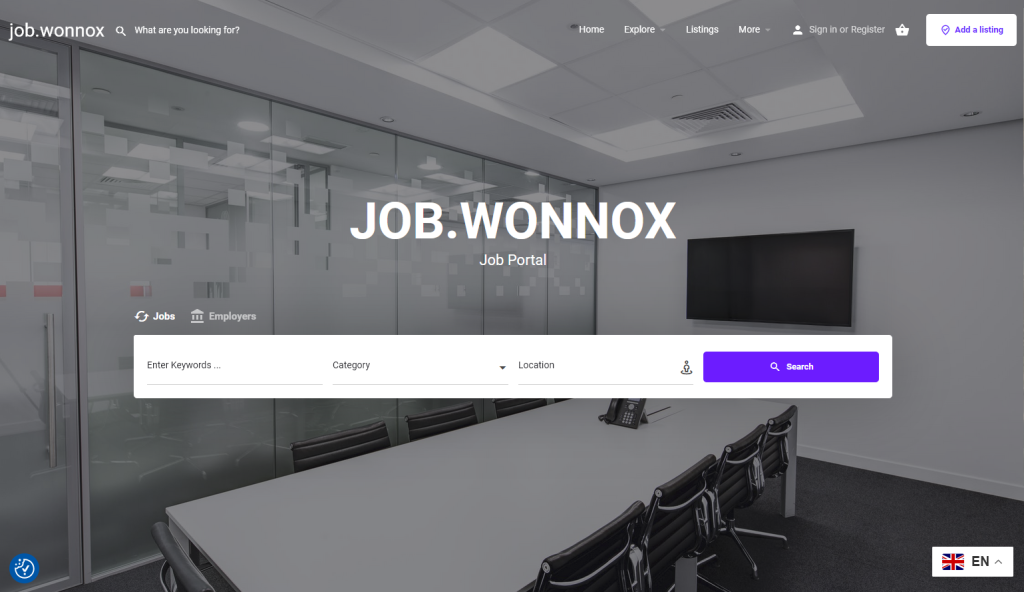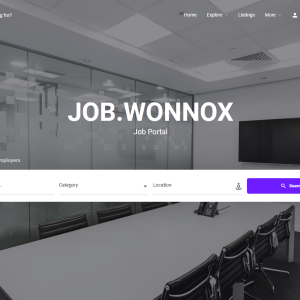
- Direct message
- Leave a review
- Bookmark
- Share
- Report
- prev
- next
Description
A job listing or profile in a web directory under the "job" category serves as an important connection between employers and job seekers, providing a platform to showcase open positions and attract suitable candidates. For employers, an effective job listing must provide detailed and clear information about the role, responsibilities, and what the organization has to offer. For job seekers, the listing should present key information in a way that allows them to quickly assess if the position aligns with their qualifications, interests, and career goals. Here are the key features of a well-structured job listing or profile in a web directory:
1. Job Title and Position Information:
Job Title: A clear, specific job title is essential, such as “Senior Software Engineer,” “Digital Marketing Specialist,” or “Customer Service Manager.” Avoid vague terms like “Superstar Needed” as it can lead to confusion.
Job Type: The listing should specify whether the position is full-time, part-time, contract, freelance, or internship. This helps candidates determine if the role fits their availability.
Location: Include the physical location of the job (city, state, and country) or specify if it is a remote position. If there is flexibility (e.g., hybrid options), this should be noted.
Salary Range: Providing a salary range or at least a competitive compensation statement can attract more applicants. If salary transparency is not possible, terms like “competitive” or “negotiable” can be used, although clarity is always preferred.
2. Job Overview:
Brief Job Description: A summary that gives a quick snapshot of the role’s purpose and its importance within the company. It should highlight what makes the job unique and what the company is looking for in a candidate.
Key Responsibilities: A list of the primary duties and responsibilities, usually in bullet point format, to clearly outline what the job entails. It helps candidates understand what they will be doing on a day-to-day basis.
Key Performance Indicators (KPIs): Mentioning specific goals or targets, like “increase sales by 10% in the first quarter” or “maintain a client satisfaction score of 90%,” helps set expectations for job performance.
3. Qualifications and Requirements:
Educational Requirements: Specify the minimum education level required, such as a bachelor’s degree, associate’s degree, or specific certifications. This helps filter out unqualified applicants.
Experience Required: List the number of years of experience needed in the field or similar roles. For example, “3+ years of experience in digital marketing” or “5+ years in software development.”
Technical Skills: Highlight any specific skills required for the job, such as “proficiency in JavaScript,” “advanced Excel skills,” or “experience with CRM software.”
Soft Skills: Include desired soft skills such as “strong communication skills,” “team player,” or “problem-solving abilities.” These qualities are often critical to job performance.
4. Company Information:
About the Company: A brief description of the company’s mission, culture, and values helps candidates understand the work environment and the type of organization they may be joining.
Company Size: Indicating the number of employees or the size of the team can help candidates assess the company’s scale and its impact on their role.
Industry and Market: Mentioning the industry (e.g., tech, healthcare, finance) and the market the company serves gives candidates context about the job’s environment and potential growth opportunities.
Website URL: A link to the company’s website allows candidates to explore more about the organization, its products or services, and its work culture.
5. Benefits and Perks:
Compensation Package: Details on the total compensation package, including bonuses, commission structures, or equity options, are valuable for attracting candidates.
Health and Wellness Benefits: Information about health insurance, dental plans, vision coverage, or wellness programs can be a strong incentive for job seekers.
Paid Time Off (PTO): Include details on vacation days, sick leave, and paid holidays to give candidates a sense of work-life balance.
Remote Work and Flexible Hours: If applicable, specify the availability of remote work options, flexible schedules, or work-from-home days.
Other Perks: Mention perks like gym memberships, professional development opportunities, team-building activities, or company-sponsored events.
6. Application Process:
Application Deadline: Clearly state the last date for applying to help candidates plan their submissions. It adds urgency and encourages timely applications.
How to Apply: Provide a detailed application process, including instructions for submitting resumes, cover letters, and any other required materials like portfolios or work samples.
Contact Information: An email address or contact person for inquiries related to the job listing can be helpful for candidates who have specific questions before applying.
Application Platform: If applications are to be submitted through a specific platform or company portal, provide the link and instructions for accessing the application form.
7. Job Location and Workplace Environment:
Office Environment: A description of the work environment (e.g., “fast-paced,” “collaborative,” “remote-friendly”) can help candidates visualize their day-to-day experience at the company.
Workplace Culture: Information on the team’s culture, diversity, and inclusivity efforts can attract candidates who value a supportive and welcoming workplace.
Company Values: Highlighting core values, such as “innovation,” “customer-first approach,” or “commitment to sustainability,” can attract candidates who align with these principles.
8. SEO and Keyword Optimization:
Relevant Keywords: Incorporate keywords related to the job title and industry, such as “remote software engineer,” “marketing specialist in healthcare,” or “customer support agent in Boston.” This improves search engine visibility and ensures the listing reaches the right candidates.
Tags and Categories: Using tags like “remote job,” “entry-level position,” or “senior management” helps the listing appear in specific search results and attract targeted candidates.
9. Visual Elements:
Company Logo: Including the company’s logo adds a professional touch and helps with brand recognition, making the listing more visually appealing.
Team Photos: Images of the team or office environment can help job seekers get a sense of the workplace culture and atmosphere.
Video Introductions: A short video featuring a team leader or hiring manager discussing the role and the company’s values can make the listing more engaging and personal.
10. Diversity and Inclusion Statement:
Commitment to Diversity: Including a statement about the company’s commitment to diversity, equity, and inclusion can help attract a broader pool of candidates.
Equal Opportunity Statement: A note that the company is an equal opportunity employer assures candidates that they will be considered fairly, regardless of race, gender, religion, or background.
11. Client or Employee Testimonials:
Employee Quotes: Including quotes from current employees about their experiences working at the company can give potential hires a better sense of what to expect.
Client Testimonials: If the role involves client-facing work, sharing feedback from satisfied clients can demonstrate the company’s reputation and the positive impact of the job.
12. Career Advancement Opportunities:
Growth Potential: Mention opportunities for advancement, such as the potential to move into leadership roles or access to mentorship programs.
Professional Development: Information about available training, workshops, or support for obtaining certifications can attract ambitious candidates.
Internal Mobility: Highlighting a culture of promoting from within can attract candidates looking for long-term career paths.
13. Company Achievements and Recognitions:
Awards and Honors: Listing awards or recognitions, like “Best Place to Work” or “Top Innovator in FinTech,” can enhance the company’s appeal.
Press Mentions: Including links to positive media coverage or industry accolades can help boost the company’s credibility.
14. Call to Action (CTA):
Encourage Engagement: A strong CTA, such as “Apply Now,” “Join Our Team,” or “Start Your Next Career Adventure,” encourages candidates to take immediate action.
Engagement Prompts: Adding phrases like “Explore Your Future with Us” or “Ready to Make an Impact?” can make the listing more engaging and appealing.
15. Metrics and Analytics:
Views and Application Count: Some directories include metrics like the number of views or applications received. This can indicate to potential candidates the popularity or competitiveness of the role.
Save and Share Options: Enabling candidates to save the listing or share it on social media can increase its visibility and reach.
A well-rounded job listing in a web directory must be informative, engaging, and easy to navigate. It should highlight the job’s key features, company culture, and benefits while providing clear instructions on how to apply. With detailed information and a user-friendly layout, the listing can attract a diverse pool of qualified candidates, ultimately leading to successful recruitment. By focusing on clarity, relevance, and engagement, a job listing can effectively serve both the hiring company and job seekers.

Add a review